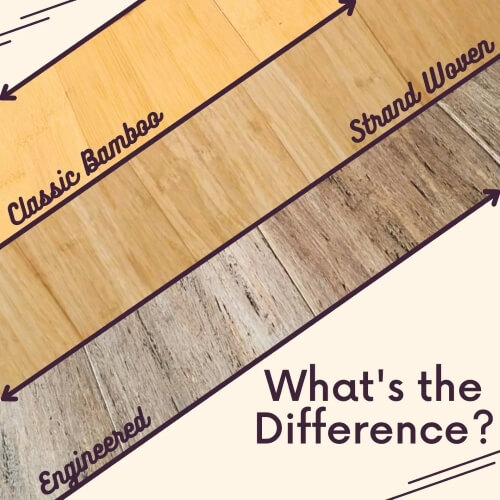Bamboo floors are rapidly gaining popularity due to their strength and environmental benefits. However, many consumers may not fully understand the details of this product.
So, what should they know and consider when purchasing new bamboo flooring? Check below to find out more…
How Bamboo Flooring is Made
Bamboo is primarily sourced from Hunan, a province in China, and is a fast-growing grass that can be harvested quickly, making it a highly renewable resource. The bamboo stalks are split vertically and flattened into narrow sheets, which are then laminated and milled into floor planks. Preservatives are added to enhance durability for both residential and commercial use.
Strand bamboo flooring, which uses smaller bamboo particles to add fibers, increases strength. These strands are incorporated during the lamination process and become part of the planks used in bamboo flooring. Bamboo is versatile and can be used in various applications, including glue-down or nail-down planks for main floors or bedrooms, as well as floating bamboo floors for finished basements. It is also suitable for light commercial applications, such as office buildings or smaller retail spaces.
Choosing the Best Type of Bamboo Floors
Bamboo floors are available in various styles, including horizontal and vertical options, with the difference in appearance achieved by laying the bamboo stalks and strands at different angles during lamination. Some people prefer the natural look of horizontal bamboo flooring, while others favor the striped appearance of vertical styles. Despite the difference in appearance, both styles are made from the same raw material and offer similar levels of hardness and durability.
Quality manufacturers ensure that the bamboo stalks used in production have been aged between five and seven years. While younger stalks may be more abundant and quicker to reproduce, they are also softer and more prone to warping and bending. Be cautious of manufacturers who use younger stalks and check for information on the adhesives used in the process. Some cheaper bamboo flooring brands may use low-quality adhesives, which can compromise the product’s quality and reduce its environmental benefits.
Look for manufacturers committed to delivering sustainable, durable products, especially those that meet CARB standards, ensuring low or no VOCs (volatile organic compounds) for better air quality. Bamboo flooring is available in several colors, including the popular carbonized tone and a natural light-colored option. Choose the color that best complements your décor, as these options are widely available from top wood flooring retailers.
When shopping for bamboo floors, avoid poorly made products and opt for reputable, durable brands that comply with CARB standards and use fully matured stalks. Your flooring retailer should provide the necessary information to help you make an informed decision. Bamboo floors offer an excellent, affordable, and durable choice for both solid and floating wood floors. With its environmental benefits, bamboo flooring is increasingly popular among homeowners, decorators, and homebuilders across North America.
